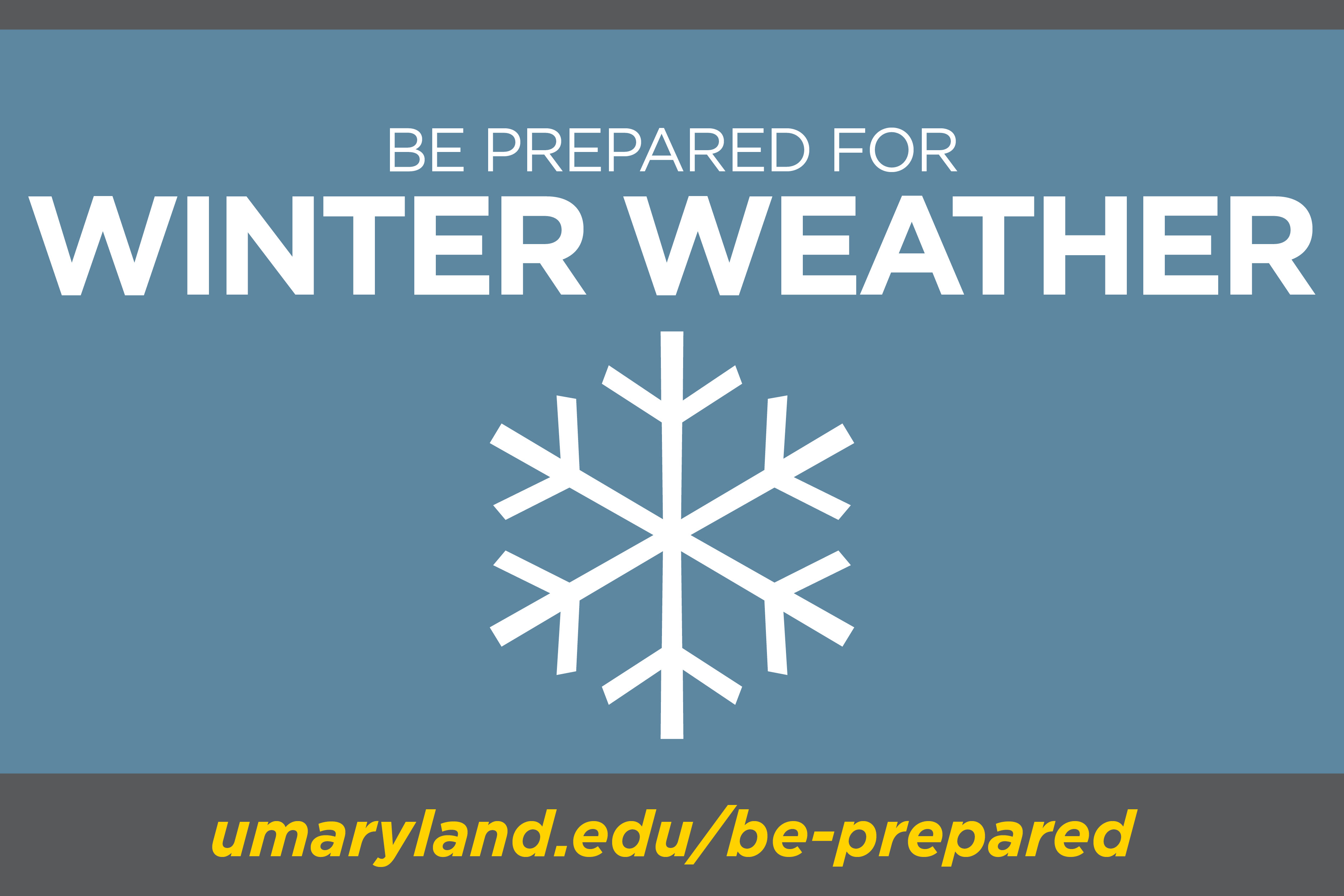Be Prepared for Winter Weather
January 14, 2020
Do you know what to do in a winter weather emergency? Wear warm clothing and go slowly while walking or driving. Stay inside during a storm. Learn what other steps you can take to prepare for this type of emergency.
Frostbite and Hypothermia
Dress appropriately to protect yourself against frostbite and hypothermia. Wear warm, dry clothes, including a coat, hat, gloves, scarf and cover exposed skin. If you detect signs of frostbite or hypothermia, seek medical attention immediately.
Frostbite
- Frostbite occurs when the skin and body tissue just beneath it freezes.
- Signs: Loss of feeling and white or pale appearance in extremities, such as fingers, toes, earlobes, face, and the tip of the nose.
- What to do: Cover exposed skin, but do not rub the affected area in an attempt to warm it up. Seek medical help immediately.
Hypothermia
- Signs: Dangerously low body temperature (under 95°), uncontrollable shivering, memory loss, disorientation, incoherence, slurred speech, drowsiness, and apparent exhaustion.
- What to do: If symptoms of hypothermia are detected, take the person’s temperature. If it is below 95°, seek medical attention immediately. Get the victim to a warm location. Remove wet clothing. Warm the center of the body first by wrapping the person in blankets or putting on dry clothing. Give the victim warm, non-alcoholic beverages if they are conscious. Seek medical help immediately.
The U.S. Centers for Disease Control and Prevention recommends that if you detect symptoms of frostbite, seek medical care. Because frostbite and hypothermia both result from exposure, first determine whether the victim also shows signs of hypothermia. Hypothermia is a more serious medical condition and requires emergency medical assistance.
Other tips
- Stay indoors during winter storms.
- Walk carefully on snow, icy, walkways.
- Avoid overexertion when shoveling snow. Overexertion can bring on a heart attack — a major cause of death in the winter. Use caution, take breaks, push the snow instead of lifting it when possible, and lift lighter loads.
- Drive only if it is absolutely necessary. If you must drive: travel in the day; don’t travel alone; keep others informed of your schedule; stay on main roads and avoid back road shortcuts.
- Let someone know your destination, your route, and when you expect to arrive. If your car gets stuck along the way, help can be sent along your predetermined route.
- If the pipes freeze, remove any insulation or layers of newspapers and wrap pipes in rags. Completely open all faucets and pour hot water over the pipes, starting where they were most exposed to the cold (or where the cold was most likely to penetrate).
- Maintain ventilation when using kerosene heaters to avoid buildup of toxic fumes. Refuel kerosene heaters outside and keep them at least three feet from flammable objects.
- Conserve fuel, if necessary, by keeping your residence cooler than normal. Temporarily close off heat to some rooms.
- If you will be going away during cold weather, leave the heat on in your home, set to a temperature no lower than 55ºF.
Stay or Go
If you become stuck in your car during extreme winter weather or a winter storm, consider the following to determine whether you should stay in place or leave.
Stay
- If stuck on the road to avoid exposure and/or rescue is likely.
- If a safe location is neither nearby nor visible.
- If you do not have appropriate clothing to go outside.
- If you do not have the ability to call for help.
Go
- If the distance to call for help is accessible.
- If you have visibility and outside conditions are safe.
- If you have appropriate clothing.
- Once the storm has passed, if you are not already home, follow instructions from your local transportation department and emergency management agency to determine which route will be safest for you to get home. Drive with extra caution.
Sources: ready.gov/winter-weather and snow.dc.gov/page/snow-safety-tips